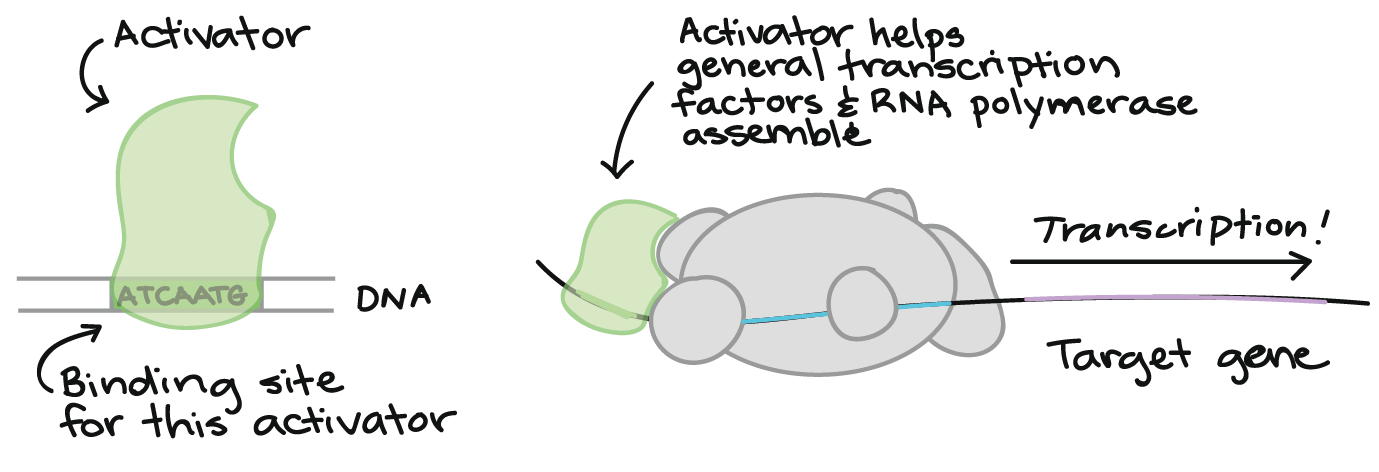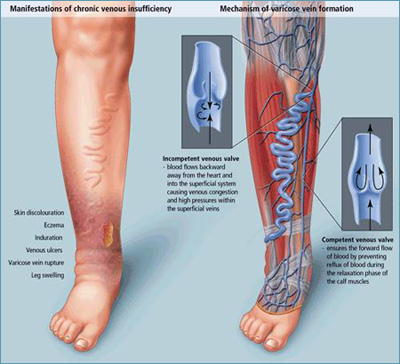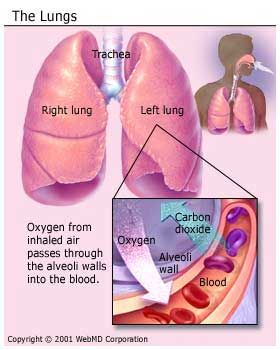Forget the crunches and really work that core
What are hypopressive techniques (HT)?
HT consist of a series of techniques that,
through a sequence of different postures
and movements, contract your diaphragm during exhalation, resulting in a
negative pressure inside your thoracic and pelvic cavities. In other words,
you suck in your guts while exhaling so that the intra-abdominal pelvic
pressure is reduced.
 |
| Piti Pinsach |
When you exhale, your rib cage usually
contracts, but when performing a hypopressive technique, the opposite happens.
That's why the intra-abdominal pressure is reduced. Apnea (suspension of breathing) is then maintained for some seconds
in order to stimulate a reflex concentric contraction of the core and pelvic
floor muscles.
Why are hypopressives better than
traditional ab exercise?
 |
| Photo: thevoicenotes.com |
The key element is the REFLEX CONCENTRIC CONTRACTIONS. While most ab exercises, including
Pilates, involve VOLUNTARY CONTRACTIONS and increase intra-abdominal pressure,
hypopressives work just the other way round.
This difference is of outmost importance
because both, pelvic floor and abdominal
muscles, are mainly formed by type I (involuntary) fibers. Therefore,
training should focus on these fibers, which are only stimulated by reflex
contractions.
Unfortunately, traditional ab exercises, which are hyperpressive (they increase thoracic and pelvic pressure), can
even be harmful.
Why are traditional ab exercises detrimental?
 |
| Photo: mutusystem.com |
The strengthening of the voluntary muscle fibers
that occurs through traditional exercises is directly proportional to the deactivation of the involuntary ones.
As a result, traditional exercise weakens
core and pelvic tone, which in turn leads to:
·
 |
| Photo: nyboneandjoint.com |
urinary incontinence
· prolapses
· painful sexual relations
· back problems like lumbago
· esthetic issues such as
abdominal flaccidity or swollen stomach
This fact was proved in 2007 by Caufriez,
the founder of hypopressives. During a 6-week study, 16 women performed
traditional ab exercises 45 minutes twice a week. The researchers found a 32.7% decrease in base pelvic floor tone,
demonstrating not only the ineffectiveness of such exercises but also showing
their prejudicial effects.
Benefits
of hypopressives
Waist
slimmer & ab toner
 |
| pinterest.com |
HT increase abdominal and
pelvic base tone, which in turn decreases waist girth and leads to a flat, hard
midsection.
A 2007 study showed
that 20 min of daily HT for 6 months reduces
waist circumference by 6%.
A 2014 study showed
that an acute 20 min session of hypopressives significantly reduces waist
circumference while increasing thoracic
amplitude and peak expiratory flow.
HT are especially
challenging on the transverse and
oblique abdominal muscles, and therefore provide a complete and tough
workout that will get you those flat abs
and slim waist in a few weeks (provided your fat percentage is low enough.
You can spot tone, but not spot reduce so make sure you're also getting your
cardio in.)
 |
| youqueen.com |
Not only do they
flatten your abs but they will also respect your vertebral column and won't
strain your lumbar spine. While the
risks of traditional exercises outweigh the benefits, with HP it's just the
other way: all advantages with no drawbacks.
Ameliorates urinary
incontinence (UI) issues
Urinary incontinence
(UI) is a common issue among female athletes who aren't even aware that they
suffer from a condition that negatively impacts their performance.
A 2002 study showed
that 32% of British and French women, 34% of German women and 15% of Spanish
women had suffered symptoms of UI during the 30 days prior to the study.
Females are more likely to undergo UI because of menopause and pregnancy.
The increased base
tone that HT provide translates into a better
and faster control of your urinary tract, which reduces the risk of
involuntary leakages. This occurs thanks to the repositioning of the bladder and the improvements in pelvic strength.
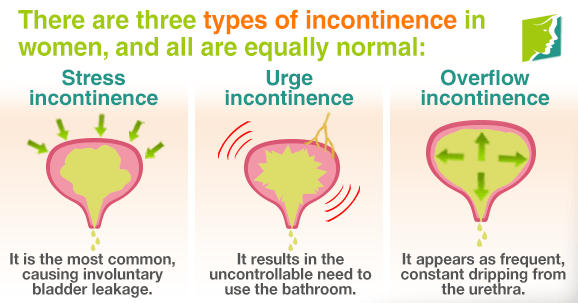 |
| Photo: 34-menopause-symptoms.com |
In a 2007 study, 100
women with poor pelvic tone and urinary incontinence performed 20 min of HP
everyday for 6 months, resulting in an
increase in pelvic floor tone by 58% and in shock absorption capacity by 48%.
Furthermore, there was a 20% increment
in contractile muscle strength and a significant 6% reduction in waist girth.
 |
| Photo: twaamc.com |
That same year,
another study found akin results when a group of adults, average 68.5 years
old, performed HT 4 times per week for 6 months, resulting in an increase of basal tone by 23.5%, of loading tone by 25.3% and of perineal
blocking during exertion by 108,4%. HT effectively solved UI in both sexes
as 85.7% of cases were decreased or even
disappeared.
In 2010 yet another study reinforced the
aforementioned results: UI was significantly reduced in an intergroup study of
126 subjects, average 43 years old, who practiced HT daily for 30 minutes 3
times a week during 3 months. On the other hand, the Pilates and control groups showed no improvement.
Better sex life
The pelvic muscles are
intimately linked with sexual function, especially in women. Followers of this
technique claim to experiment an increase
in desire, sensation and control during the sexual practice. This may be
due to the increased blood flow and
genital sensitivity and a decrease
in pelvic congestion.
Stay tuned because in
a few days I will upload a post expounding on this topic.
Improved physical performance
HT effectively work the
diaphragm and the respiratory muscles. Not
only do you acquire a deeper awareness of your body and diaphragm, but your
pulmonary, thoracic and diaphragmatic capacities will be dramatically increased.
A toned, flexible diaphragm will
translate into a better physical performance, especially in aerobic
activities.
 |
| Photo: yogadonk.com |
 |
| Photo: fragmenthealth.com |
HT involve a phase of apnea, which results
in a high oxygen desaturation (decrease in blood oxygen). Studies have shown
that after apnea, blood acidosis is
reduced and oxidative damage is no longer produced. The same study
concluded that apnea can be used to increase
tolerance to hipoxemia (low oxygen levels).
Is not that what any athlete would want? To
be able to put in a brilliant
performance in spite of the oxygen deficit?
Other studies report that HP increase hematocrit, the volume percentage
of erythrocytes in blood. Red blood cells are in charge of transporting
oxygen to your cells. More red blood
cells mean more oxygen carrying capacity and more oxygen delivery to your
muscles translate into better physical performance, especially in endurance
sports. Many athletes even try to increase their oxygen levels through banned
practices like taking Erythropoietin.
 |
| Photo: americasblood.org |
Studies to definitively prove the reduction
in cellular acidosis, the regression in oxidative damage and the increase in
hematocrit are still in progress. It is speculated that these effects are the
result of reflex splenic contraction or an increment in erythropoietin.
Other studies pending of publication will
show a reduced pre-competition anxiety
and an augment in self-confidence.
Improvements
in posture and biomechanics also account for the
improvements in performance.
Back health and balance
The abdominal vacuum
and negative pressure in our abdominal cavity cause a traction effect on the
vertebral discs which can be extremely therapeutic, especially in the lumbar
region, when combined with other postural exercises.
 |
| Photo: gimnasia-hipopresiva.com |
HT is known to reduce lumbar pain by decompressing the
vertebral discs through the reduction in pressure and the axial traction. Lumbago, dorsalgia and other back issues
usually lessen or even disappear in the short term.
 |
| Photo: drnekessaremy.com/ |
A 2007 study showed
the benefits of doing HP for 10 weeks 1hour per week:
· -Reposition
of the plumb line (better posture)
· -Decrease
in lumbar lordosis (99. 9%)
· -Reduction
in cervical lordosis (99.8%)
· -Decrease
in dorsal kyphosis (99.5%)
· -Decrease
in scoliosis (96%).
· -Improved
postural comfort: better mobility and flexibility, less pain, and feeling
lighter (95%).
The positive
impact on the lower back and limb flexibility was tested in a 2009 study on
patients suffering from mechanical and postural low back pain. Through electromyography,
which electrically records muscle and motor neuron activity, it was seen that a
training program based on HT improves
the internal and transverse oblique activation time, therefore increasing
the force they can exert. Bear in mind that not only do these muscles rotate
the torso, but they also support the rotation of the spine and stabilize the
lower limbs.
Better posture
HT regulate muscle
tone by diminishing the excess tone of
some muscle groups while increasing the tone of those which lack it. It
brings tonic posture equilibrium
which translates into a better posture in just a few sessions.
 |
| Photo: cdn.lumobodytech.com |
Treat
and prevent hernias
 |
| Photo: medicinenet.com |
Hernias are weak areas of a muscle or connective tissue through which an organ or
fatty tissue protrudes.
All hernias (inguinal, ventral, incisional,
epigastric, femoral, pubalgia, umbilical, hiatal...) are caused by 2 factors:
· -An
increase in tension
· -A weak
tissue that easily breaks
HT increase core and pelvic strength and
activation, which in turn can
effectively cope with the high abdominal pressure that any kind of physical
effort (even coughing) produce.
Visceral relocation and bye-bye prolapses
It also prevents internal organs from ''falling
down''. Gravity, weight lifting and traditional abdominal exercises, push
your guts downwards resulting in that typical
stomach where the upper part is flat or even hollow but the lower abs look bloated.
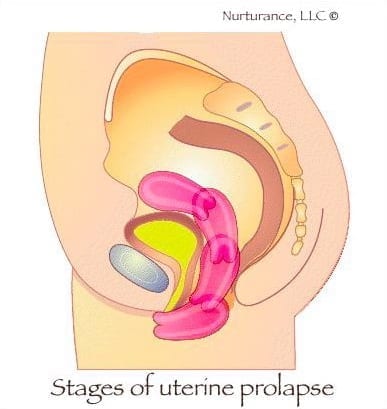 |
| Photo: alignmentmonkey.nurturance.net |
 |
| ingernder.com |
The aspiration that HT
involve reduces intra-abdominal pressure,
which in turn has a suction effect on the pelvic organs, decreasing ligament
tension and easily relocating the bladder, rectus and uterus within
the abdominal cavity. This has been demonstrated
through magnetic resonance imaging (MRI). Therefore, HT are effective in treating organ prolapses, whether
uterine, anterior (bladder) or rectal.
Fight constipation
The typical American
lacks fiber and exercise, which lead to constipation, which in turn produces
intestinal issues like colon cancer. It is of outmost importance to have a
plant-based diet and exercise regularly, but HT thanks to the negative abdominal pressure can accelerate bowel movements.
Improved respiratory function.
 |
| Photo: selfication.com |
HT efficiently work
your diaphragm, which plays a key role in breathing, as well as the muscles in
charge of inhaling and exhaling, resulting in an improvement of respiratory (peak flow) parameters and respiratory
conditions like asthma. This also leads to better sports performance.
Post-partum recovery
After pregnancy the
body needs to recover its previous state by toning the core and reinstating
pelvic floor rigidity. Unfortunately, it is very common for mothers to maintain
abdominal and pelvic flabbiness after giving birth, which leads to poor vaginal muscle tone, unsatisfying
sexual relations, flaccid stomach and urinary incontinence.
Say NO to depression
It is known that in order to prevent
postpartum depression, an exercise program can be of great help to achieve a feeling
of well-being, reduce anxiety and increase self confidence.
A recent study showed that:
• 90% of women had a negative image of
their body after delivery
After an 8 week HT program:
• 89.48% felt harmony and a positive impact
on their abs and 75% in their pelvic floor
• 64% increase in self-esteem
•40% reduction in anxiety
•32% reduction in cognitive anxiety
• 100% better posture and pain reduction.
In conclusion, HT enhance self-esteem and confidence during pregnancy and postpartum
when hormonal changes and various emotional situations occur.
Better
vascularization and venous return
During pregnancy, intra-abdominal pressure
increases due to the expanding uterus, blood volume and other factors which
contribute to the development of varicose veins in the legs and pelvis. HT is known to activate the musculature,
ease venous return and improve lower limbs vascularization.
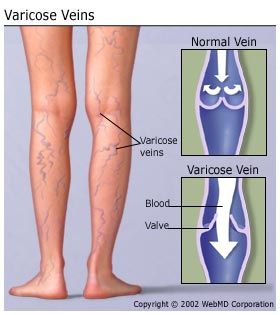 |
| Photo: webmd.com |
Scar
and surgery healing
People who have undergone surgery or women
who have had a cesarean section or episiotomy can benefit from HT as it diminishes myofascial tissue (tissue
around the muscle) traction, aiding to heal
tissue adhesions and scars.
Abdominal
diastasis
 |
| Photo: mutusystem.com |
Between 30 to 70% of women suffer from
abdominal diastasis during and after pregnancy.
Abdominal diastasis is defined
as a separation of about 2.7 cm between the
two sides of the ab muscle. During pregnancy the linea alba widens to make
room for the baby and, although it should recover after delivery, more often
than not it stays distended.
 |
| Photo: momsintofitness.com |
This
gap hinders the integrity and functionality of the ab muscles, causing low back
pain and lumbo-pelvic instability. Not only is recovery essential for aesthetics (a
broad linea alba leads to a protruding stomach) but it is also vital for maintaining good posture and motor
efficiency.
Thanks to the strong respiratory and
postural action that HT derive, the core
gains back its stability and is able to function again as a corset.
A 2014 study showed that after a 3-month
program of weekly HT in 44 women (average age of 45.6) diastaisis is significantly decreased (1.1 cm).
Moreover, the Spanish Association of Physiotherapists (AEF) recommends HT for
post-partum recovery. There is a plethora anecdotal evidence of health
professionals, midwives and physiotherapists, who advise these exercises and corroborate
their benefits.
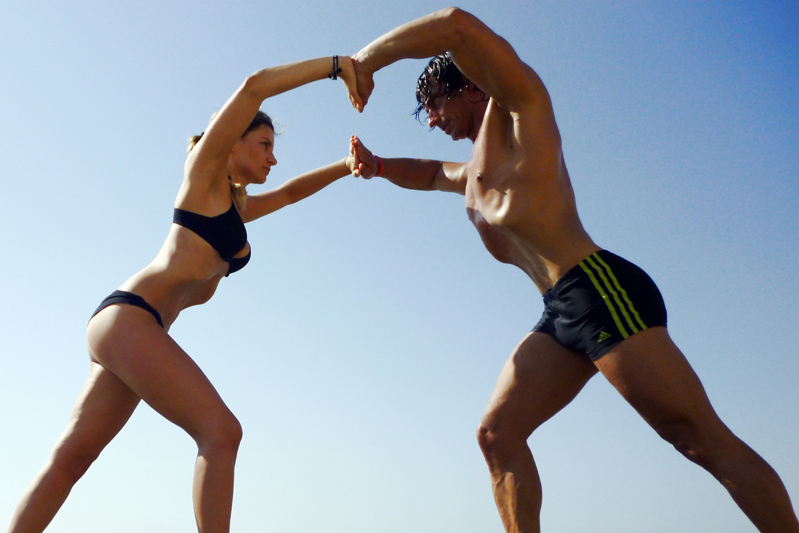 |
| Photo: sportlife.com |
References
''Abdominal Efficiency and Rectus Separation.'' International Journal of Medical Pharmaceutical Science and Engineering. 7(1), 44-48.
"About." Hypopresive Techniques. Accessed January 24, 2016. http://hypopresives.com/about.
Apelle R., Bourcier A., Latorre F. (1998). Pelvic floor dysfunction. Roma: Scientific Internacionale.
Amostegui, J. (1999). Incontinencia Urinaria en la mujer deportista: fisioterapia. Archivos de Medicina del Deporte. 16, (74): 639-645.
''Benefits and basic principles.'' Low Pressure Fitness.
Bernardes et al. "Efficacy of Pelvic Floor Muscle Training and Hypopressive Exercises for Treating Pelvic Organ Prolapse in Women: Randomized Controlled Trial." Sao Paulo Med. J. Sao Paulo Medical Journal 130, no. 1 (2012): 5-9. PubMed.
Caufriez, M., Fernández-Domínguez, J.C., Fanzel, R. & Snoeck, T. (2006). Efectos de un programa de entrenamiento estructurado de Gimnasia Abdominal Hipopresiva sobre la estática vertebral cervical y dorsolumbar. Physiotherapy. 28(4), 205-16.
Caufriez, M., Fernandez, D., Esparza., S; Schulmann,. D. (2007) Estudio del tono de
base del tejido músculo-conjuntivo del suelo pélvico en el postparto tras reeducación
abdominal clásica. Fisioterapia. 29 (3):133-8.
Caufriez M. (1993). Thérapies Manuelles et instrumentales en Uro-gynécologie. Tome 1. Bruxelles: MC Editions.
Caufriez M.(1998) Measurements of pelvic floor function in perineal reeducation. Publications of international conference on the pelvis floor. Montreal.
Caufriez, M. , Pinsach, P., Fernández, J.C. (2010). Abdominaux et Perinée, Mithes et Realitées,MC Editions, Mallorca.
Caufriez M., Fernández J., Deman C., Wary-Thys C., (2007). Contribución al estudio sobre el tono del Suelo Pélvico. Prog Obstet Ginecol.50, (5):282-91.
Caufriez M., Fernández-Domínguez J.., Fanzel R., Snoeck T., (2006) .Efectos de un programa de entrenamiento estructurado de Gimnasia Abdominal Hipopresiva sobre la estática vertebral cervical y dorsolumbar. Fisioterapia, 28,(4): 205-16.
Esparza, S. (2002). Efecto de la gimnasia abdominal hipopresiva en el tratamiento y prevención de la incontinencia urinaria de esfuerzo. En:
Espuña M (coord.) I congreso nacional sobre disfunción del suelo pelviano. Barcelona: Ediciones Mayo; 89-91.
Espuña, M; Rebollo, P; Puig, M.( 2004) validación de la versión española del International Consultation on Incontinence Questionnaire-Short form. Un cuestionario para evaluar la incontinencia urinaria” Med Clin , Barcelona ,122 ( 8 ): 288-92.
Fernández, C. (2007). Gimnasia Abdominal Hipopresiva en la 3º edad. Congreso franco español del suelo pelvico y pelviperineología. San Sebastian. Galindo, T.,
Espinoza, A. (2009). Programa de ejercicio en lumbalgia mecanopostural. Revista mexicana de medicina física y rehabilitación. 21: 11-19.
Healthline Medical Team. "External Oblique Muscle Origin, Function & Definition." Healthline. November 4, 2014.
Hunskaar, S., Lose, et al. (2003) Prevalence of Stress Urinary Incontinence in Women in Four European Countries, 2002. ICS: UK.
Jácome, Cristina, Daniela Oliveira, Alda Marques, and Pedro Sá-Couto. "Prevalence and Impact of Urinary Incontinence among Female Athletes." International Journal of Gynecology & Obstetrics, 2011, 60-63.
Joulia, F., Steinberg, J., Faucher, M., Jamin, T., Ulmer, C., Kipson, N., & Jammes, Y. (2003). Breath-hold training of humans reduces oxidative stress and blood acidosis after static and dynamic apnea. Respiratory Physiology & Neurobiology, 137, 19-27.
Junquera Landeta, Mikel. "GIMNASIA ABDOMINAL HIPOPRESIVA: BENEFICIOS Y PRINCIPIOS BÁSICOS DE REALIZACIÓN." Fisioterapia Online.
Junquera Landeta, Mikel. ''¿POR QUÉ NO HACER EJERCICIOS ABDOMINALES Y SI HIPOPRESIVOS?''. Fisioterapia online.
Latorre, G., Seleme, M., Resende, A.P., Stüpp, L. y Berghmans, B. (2011). Hipopressive gymnastics: evidences for an alternative training for women with local proprioceptive deficit of the pelvic floor muscles. Fisioterapia Brasil, 12(6), 463-466.
Pinsach, and Rial. "Hipopresivos: Preguntas Y Respuestas." Low Pressure Fitness. May 6, 2014.
Pinsach, Rial, Caufriez, Fernandez, Devroux, and Ruiz. "HYPOPRESSIVES, A PARADIGM CHANGE." COPLEFC.
Pinsach, P. (2010). Técnicas Hipopresivas, origen, evolución y aplicación práctica. Abstracts. III Congreso Internacional de Ciencias del Deporte y Educación Física. Pontevedra
Quintana, A. (2014). Práctica de 12 semanas de ejercicios hipopresivos por un grupo de practicantes de fitness. Pte de publicar.
Rett, M.T., Knicker, M., Bernardes, N., Andrade, S. (2009). Prevalence of diastasis of the rectus abdominis muscles immediately postpartum: comparison between primiparae and multiparae. Rev Bras Fisioter., 13(4), 275-80.
Rial, and Villanueva. "Conceptual Approach to Low Pressure Fitness." Low Pressure Fitness.
Rial T. (2013). Efectos de la gimnasia hipopresiva en la incontinencia urinaria de la mujer adulta. Facultad de Ciencias de la Educación y el Deporte. Departamento de Didácticas Especiales. Universidad de Vigo. Tesis Doctoral.
Rial, T. y Pinsach, P. (2010). Entrenamiento abdominal e incontinencia urinaria. VI Congreso Internacional de la Asociación de Ciencias del Deporte, Elche: Alicante.
Rial, T., Ribeiro, L., Garcia, E. & Pinsach. P. (2013). Efectos inmediatos de una sesión de ejercicios hipopresivos en diferentes parámetros corporales. Cuestiones de Fisioterapia, 43(1), 13-21.
Rial, T.; Chulvi-Medrano, I.; Fernández, T. HEMATOLOGICAL RESPONSES OF DIAPHRAGMATIC ASPIRATION ON SPLENECTOMIZED SUBJECT. A CASE STUDY. (2014). Universidad Católica San Antonio De Murcia.
Rial, T., Chulvi-Medrano, I. , Pinsach, P., Navarro, I. "Yes: Low Pressure Fitness Reduce Belly Circumference!" Department of Special Didactics, University of Vigo, 2014.
Rial. ''HOW TO IMPROVE ABDOMINAL DIASTASIS WITH LOW PRESSURE FITNESS ?'' Low Pressure Fitness.
Rial. "WHAT ARE THE ADVANTAGES TO CARRYING OUT LOW PRESSURE FITNESS (LPF) PROGRAM DURING POSTPARTUM?" Low Pressure Fitness.
Snoeck T, Philipot A, Caufriez M, Balestra C. (2009) .Incidence de l´Aspiration diaphragmatique associée à une apnée expiratoire sur la circulation de retour veineuse fémorale: étude par écho-doppler. Kinésithérapie scientifique, 502 : 27-30.
Soriano-Segarra, M.L. (2014). Efecto de la Gimnasia Abdominal Hipopresiva sobre el tono del suelo pélvico y otros parámetros antropométricos y funcionales relacionados con el riesgo cardiovascular en mujeres. Facultad de Ciencias de la Actividad Física y el Deporte. Universidad de Castilla la Mancha. Tesis Doctoral.
Soriano-Segarra, M.L., Corbí, B., & González-Millán, C. (2012) Valoración subjetiva de las mujeres tras un trabajo de Gimnasia Abdominal Hipopresiva. I Primeras Jornadas Nacionales de Psicología del Deporte de la UCAM: Murcia.
Thyl, S., Aude, P., Caufriez, M., Balestra, C. (2009). Incidence of l´aspiration diaphragmatique associée à unites apnée expiratoire south the circulation of retour veineuse fémorale: étude even échographie-doppler. Kinésithérapie scientifique, 502, 27-30.
Valancogne, G., Caufriez, M., de Gasquet, B., Gullarme, L., Dumont, P. (2001). Reéducation perineologique et pressions dans lénceinte manométrique abdominoperinéales. Congrés de la SIFUD. Lyon.






